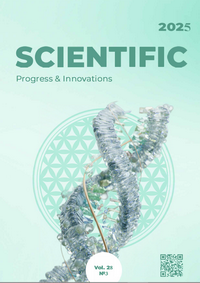Strip-Till and Verti-Till Technologies in the context of soil tillage minimization
DOI:
https://doi.org/10.31210/spi2025.28.03.08Keywords:
Strip-Till, Verti-Till, conservation tillage, soil management, Ukraine, sustainable agricultureAbstract
This study explores the relevance of implementing Strip-Till and Verti-Till technologies as integral components of modern soil conservation systems and sustainable agricultural production in the context of global challenges, including soil degradation, moisture deficits, climate change, and rising energy costs. The research methodology relied on a comprehensive synthesis of peer-reviewed publications, long-term field experiments, and statistical datasets. Findings indicate that Strip-Till successfully integrates the benefits of conventional and no-till systems by enabling precision strip tillage and localized fertilizer placement, thereby improving root system development, enhancing soil moisture retention, and reducing fuel consumption by up to 40–50 %. Verti-Till focuses on alleviating surface compaction, stimulating vertical root growth, improving water infiltration, and accelerating crop residue decomposition while maintaining soil cover. Comparative assessment demonstrates that both technologies significantly reduce erosion risks and CO₂ emissions, enhance soil biological activity, and stabilize crop yields under climate-induced stress conditions. Evidence from Ukrainian case studies confirms the feasibility of these approaches, particularly in moisture-limited regions, where Strip-Till improves corn and sunflower yields, whereas Verti-Till ensures high-quality seedbed preparation for winter crops. The results underscore the necessity of tailoring these technologies to specific farm conditions, integrating them with precision agriculture tools, and advancing technical innovations to maximize productivity gains and sustain soil fertility. The findings also provide a knowledge base for the development of region-specific recommendations on tillage minimization and fertilizer optimization strategies. Moreover, this research enriches the global discourse on conservation agriculture by offering actionable insights for policymakers, researchers, and practitioners seeking to reconcile high productivity with environmental stewardship. The practical significance of the study lies in demonstrating the potential of Strip-Till and Verti-Till to enhance agroecosystem resilience to climate change and contribute to long-term food security.
Downloads
Published
How to Cite
Issue
Section
License
Copyright (c) 2025 Scientific Progress & Innovations

This work is licensed under a Creative Commons Attribution 4.0 International License.

 Creative Commons Attribution 4.0 International Licens
Creative Commons Attribution 4.0 International Licens